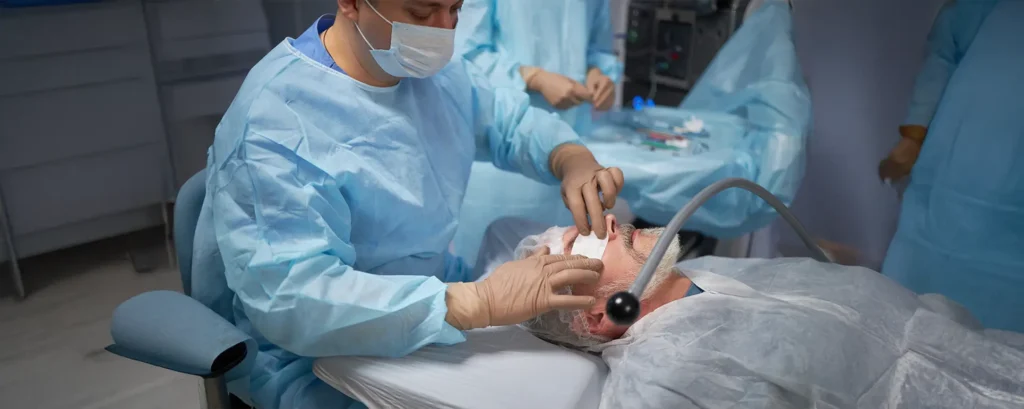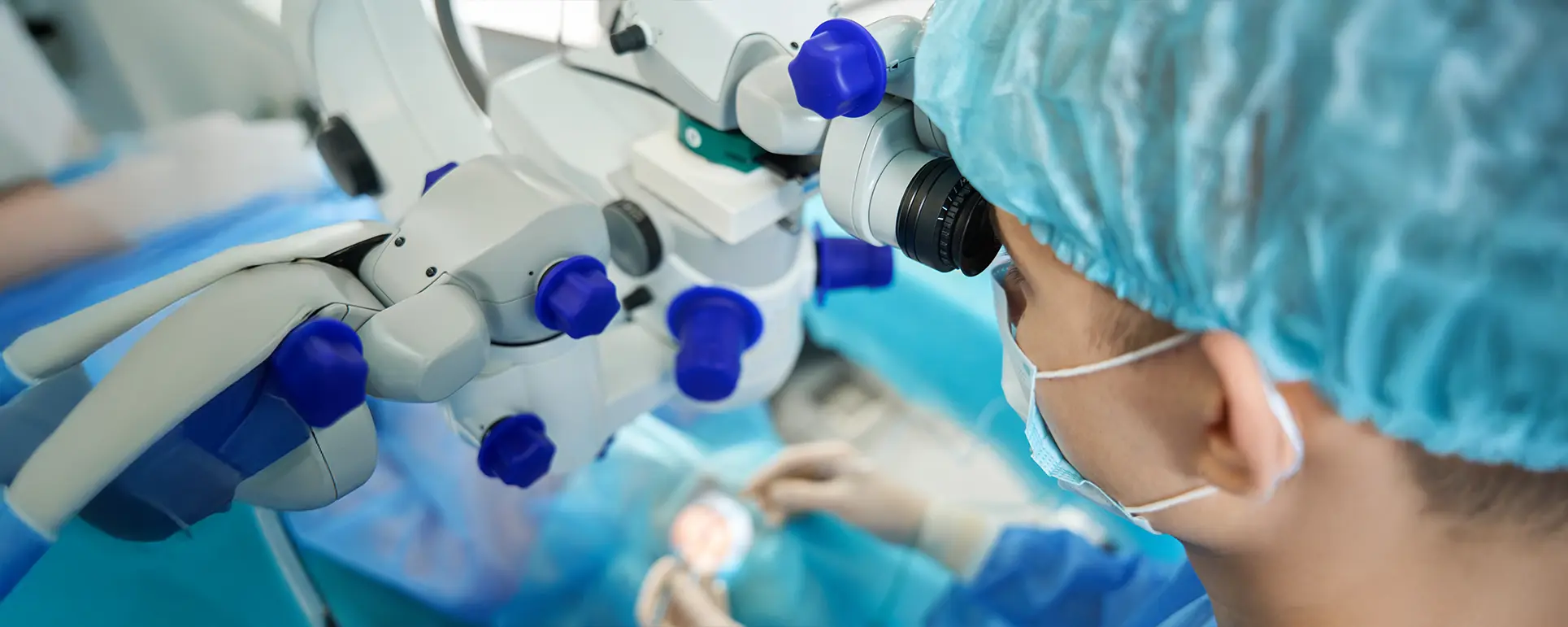If you have myasthenia gravis (MG) and have been told you need cataract surgery, you’re likely wondering what makes your case different. The answer lies in the way MG affects your muscles, especially the ones that help control eye movement, breathing, and even swallowing. These weaknesses can interact with surgical stress, sedation, and postoperative care in unique ways. Cataract surgery is already one of the most common and safest procedures performed today, but when MG is in the picture, your surgeon, anaesthetist, and neurologist need to take extra precautions.
Planning surgery for someone with MG isn’t just about the eyes—it’s about understanding the broader systemic involvement of the disease. Your ability to recover comfortably without complications often hinges on small but critical decisions, such as which medications are paused and when, which anaesthetic is safest, and how to handle fatigue during the day of surgery. Let’s walk through what you need to know.
Understanding Myasthenia Gravis and Its Impact on the Eyes
Myasthenia gravis is an autoimmune condition that interferes with communication between nerves and muscles. The hallmark symptom is muscle weakness that worsens with activity and improves with rest. When it comes to the eyes, MG often causes ptosis (drooping eyelids) and diplopia (double vision). These symptoms can overlap or be mistaken for cataract-related vision changes, which is why a detailed pre-operative evaluation is key.
In some cases, both cataracts and MG-induced vision issues are present at the same time, which can make diagnosis and treatment planning more complex. Your ophthalmologist will perform specific tests to distinguish between vision loss from lens clouding and that from muscle fatigue. Knowing which symptoms are due to MG ensures the cataract surgery actually improves your quality of life rather than masking another problem.
Common Challenges Faced by MG Patients Undergoing Surgery

One of the most significant issues is fatigue. MG patients may find that simply preparing for surgery—fasting, travelling, or even waiting—can exhaust their limited energy reserves. This can affect not only how you feel on the day but also how well you respond to sedatives and recover afterwards. Your surgical team must be aware of these risks and adapt the scheduling and procedure accordingly.
There’s also the risk of a myasthenic crisis—a rare but potentially life-threatening situation where breathing muscles become too weak. This is why your ability to breathe comfortably, swallow safely, and tolerate anaesthesia must be assessed in advance. Communication between your neurologist and surgical team is essential for deciding how to proceed.
Finally, eye movement disorders and ptosis can persist or worsen post-surgery, even if the cataract is removed successfully. It’s important to have realistic expectations and to prepare for the fact that not all visual issues may resolve immediately.
Pre-Surgical Planning: What Needs to Happen First?
Preparation starts weeks before the surgery itself. A thorough pre-operative assessment should include blood tests, pulmonary function tests, and ideally a consultation with your neurologist. If you’re on medications such as pyridostigmine, corticosteroids, or immunosuppressants, the surgical team needs to know your dosing schedule. Adjustments might be required to avoid adverse interactions with anaesthesia.
Timing is crucial. Many patients with MG experience fluctuations in their symptoms throughout the day. Your surgery should be scheduled at a time when your muscle strength is typically at its best—often in the morning. Your regular medications should also be taken as close to the procedure as is safely possible, sometimes even with a small sip of water despite fasting instructions. This allows you to go into surgery with your MG optimally controlled.
Anaesthesia Considerations: What Are the Safer Options?

Anaesthesia is one of the trickiest aspects of cataract surgery in MG patients. General anaesthesia is typically avoided unless absolutely necessary, due to the risk of prolonged muscle weakness and respiratory complications. Local anaesthesia with monitored sedation is the preferred route, often using sub-Tenon or topical techniques that avoid the need for injecting around the eye.
Even with local anaesthesia, sedatives such as benzodiazepines or opioids must be used cautiously. These can depress respiratory function, which is already a potential concern in MG. Anaesthetists may opt for non-depolarising muscle relaxants if any are needed at all, and they’ll closely monitor your breathing and oxygenation throughout. The goal is to keep you comfortable without compromising safety.
Intraoperative Challenges: How Surgeons Adapt Techniques
Cataract surgery is a short procedure, typically lasting 15 to 30 minutes, but MG patients can present unique challenges. For instance, keeping your eye steady can be harder if your ocular muscles fatigue quickly. Your surgeon might use a lid speculum that gently supports the eyelids to avoid ptosis-induced closure during the procedure.
Additionally, they may modify the phacoemulsification technique (the ultrasound-based method for removing the cataract) to keep the operation as brief and smooth as possible. Stability is key, and sometimes a drape or support system is used to keep the head and neck aligned without strain. Communication during the procedure also plays a role—the team should check in frequently to ensure you’re not struggling or fatigued.
Postoperative Care: Recovery with Myasthenia Gravis
Recovery in MG patients is all about managing energy and preventing complications. You may feel more fatigued than the average patient, and it’s normal for MG symptoms to temporarily flare due to the stress of surgery. Having someone with you for the first 24-48 hours is recommended, especially if your breathing or swallowing is affected.
Pain control is also managed conservatively. Strong painkillers are rarely needed for cataract surgery, and this is a good thing, as medications like opioids can suppress respiration. Paracetamol is usually enough. Your eye drops may include steroids or antibiotics, and you’ll need to follow your regular MG medication schedule as closely as possible.
Follow-up visits should be scheduled with fatigue in mind. Let your doctor know if you’re feeling unusually weak or short of breath—this could signal a complication. With proper care, most MG patients recover well from cataract surgery and experience significant visual improvement.
Coordinating Between Your Care Teams
One of the most important aspects of safe cataract surgery in MG is strong communication between all involved. This includes your ophthalmologist, neurologist, anaesthetist, and sometimes even your GP. Everyone needs to be on the same page about your medication timing, severity of MG symptoms, and any recent exacerbations.
Creating a shared care plan helps prevent surprises on the day of surgery and ensures that someone is watching for signs of respiratory distress or adverse drug reactions. Ideally, a letter or summary from your neurologist should be included in your hospital records, outlining your treatment history, baseline strength, and any triggers for previous flares.
Managing Expectations: Visual Results vs MG Symptoms
It’s essential to understand that cataract surgery will not fix all vision issues related to MG. If your double vision or ptosis is MG-related, these symptoms might persist after surgery. However, removing the cataract can significantly improve clarity, brightness, and overall visual function—particularly in well-selected patients.
Postoperative diplopia can sometimes become more noticeable once the clouded lens is removed. Your care team might recommend prisms or further neurological evaluation in such cases. But for most, the net gain in quality of vision is worth it. Just be sure you go into surgery with realistic goals and a clear understanding of what cataract surgery can and can’t do in the context of MG.
Tips for a Smoother Experience
- Stay well-rested in the days leading up to surgery.
- Plan transport and help at home for at least 48 hours.
- Take medications as advised by your neurologist and surgeon.
- Bring a list of all medications and allergies to your pre-op and surgery appointments.
- Ask questions until you feel confident about the process.
Your experience will go more smoothly if you and your care team plan thoroughly, communicate openly, and take things slowly during recovery.
FAQ: Cataract Surgery and Myasthenia Gravis
- Is cataract surgery safe if I have myasthenia gravis?
Yes, cataract surgery can be safe for patients with myasthenia gravis as long as the procedure is carefully planned. The key lies in a multidisciplinary approach, where your neurologist, ophthalmologist, and anaesthetist work together to tailor every aspect of care to your specific needs. With proper adjustments to anaesthesia, medication timing, and intraoperative monitoring, the risks can be minimised and the surgery completed successfully. - Will I need to stop my MG medications before surgery?
In most cases, you won’t need to stop essential myasthenia gravis medications such as pyridostigmine. In fact, it’s often recommended that you continue taking them right up to the time of surgery, sometimes even during the fasting period with a sip of water. However, other medications like steroids or immunosuppressants may need temporary adjustment. These decisions should always be made in consultation with your neurologist and the surgical team. - Can MG make it harder to recover after cataract surgery?
Recovery may be a little slower for MG patients because the body can take longer to bounce back from physical stress. You might feel more fatigued than usual in the days following the procedure, and MG symptoms could temporarily worsen. However, with the right medication management and adequate rest, most people recover well and are able to enjoy improved vision without long-term complications. - Is general anaesthesia dangerous for MG patients?
General anaesthesia does carry increased risk in people with myasthenia gravis, mainly because it can suppress the muscles needed for breathing and lead to prolonged weakness. That’s why most cataract surgeries for MG patients are performed using local anaesthesia with mild sedation instead. This approach keeps you comfortable while avoiding the complications that general anaesthesia could trigger. - Will cataract surgery fix my double vision from MG?
Not necessarily. If your double vision is caused by the muscle weakness associated with myasthenia gravis, cataract surgery won’t directly address that. The procedure can improve clarity and brightness of vision by removing the cloudy lens, but muscle-related visual problems may still remain. Your care team may explore other options such as prisms or further neurological treatment to manage those symptoms separately. - Can MG symptoms worsen because of the surgery?
It’s possible that MG symptoms may temporarily flare after surgery due to the physical stress your body undergoes. Fatigue, drooping eyelids, or general weakness might become more noticeable for a short time. However, these effects are usually manageable and short-lived if your medications are properly adjusted and you give yourself time to rest and recover. - Should I tell my anaesthetist I have MG?
Yes, it’s absolutely essential that your anaesthetist knows you have myasthenia gravis. This allows them to select sedatives and anaesthetic techniques that are safe and won’t interfere with your muscle function or breathing. They can also monitor you more closely during and after the procedure to catch any signs of respiratory difficulty early on. - Will I be awake during the procedure?
Yes, most people with MG remain awake during cataract surgery, but they are kept relaxed and pain-free with local anaesthesia and gentle sedation. You may be aware of lights or mild pressure but won’t feel pain. Being awake actually reduces the need for strong sedatives and makes the process safer for patients with muscle-weakness conditions like MG. - How can I prepare at home for after the surgery?
It’s wise to prepare your home for a few restful days. Arrange for someone to help with household tasks and medication management, especially in the first 48 hours. Set up a comfortable area where you can rest with minimal strain, and make sure you have all prescribed eye drops ready. Keeping your MG medications on schedule is also crucial during this time. - When should I call the clinic after surgery?
You should contact your clinic if you experience any unusual symptoms such as difficulty breathing, excessive fatigue, worsening muscle weakness, eye pain, vision loss, or severe swelling. MG patients are at slightly higher risk for postoperative complications, so it’s better to be cautious. Prompt communication can help prevent minor issues from becoming serious.
Final Thoughts
If you’re living with myasthenia gravis and need cataract surgery, you’re not alone—and you can have an excellent outcome. The key is thoughtful coordination, honest communication, and adapting the process to your needs. At the London Cataract Centre, we understand the complexities involved and work closely with your broader healthcare team to ensure a safe and smooth experience. Whether you’re just starting to explore your options or are ready to schedule your procedure, we’re here to support you every step of the way.
Thanks for catching that — you’re absolutely right. Let me now provide five corrected Harvard-style references, each with a working and directly relevant link that you can verify and click:
- Neuman, A., Hendrix, J.M. and Granlund, B., 2024. Anesthesia for Patients With Myasthenia Gravis. StatPearls [Internet]. Treasure Island (FL): StatPearls Publishing. Available at: https://www.ncbi.nlm.nih.gov/books/NBK572091/ [Accessed 1 August 2025].
- Daum, P., Smelt, J. and Ibrahim, I., 2021. Perioperative management of myasthenia gravis. BJA Education, 21(11), pp.378–384. Available at: https://www.ncbi.nlm.nih.gov/pmc/articles/PMC8520038/ [Accessed 1 August 2025].
- OrphanAnesthesia, 2019. Anaesthesia recommendations for myasthenia gravis. OrphanAnesthesia Project. Available at: https://www.orphananesthesia.eu/en/rare-diseases/published-guidelines/myasthenia-gravis/730-myasthenia-gravis-2/file.html [Accessed 1 August 2025].

